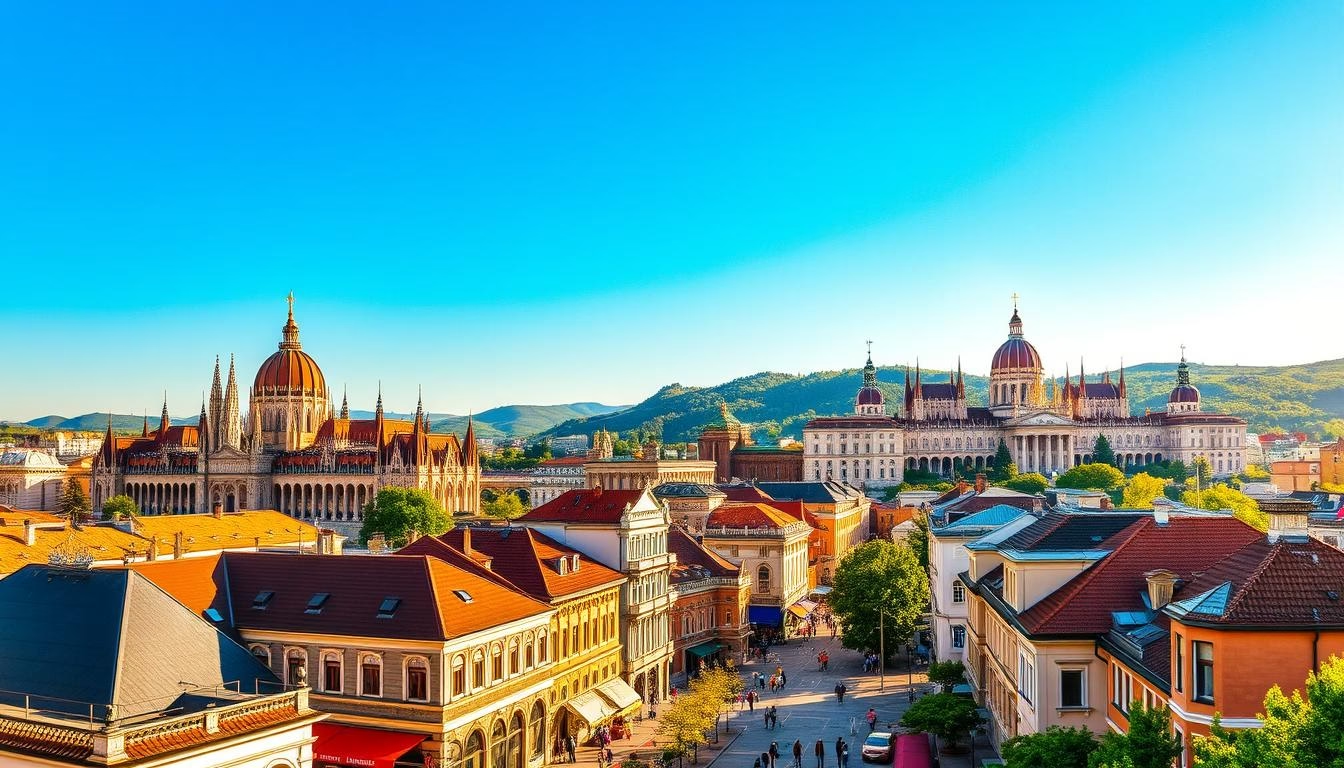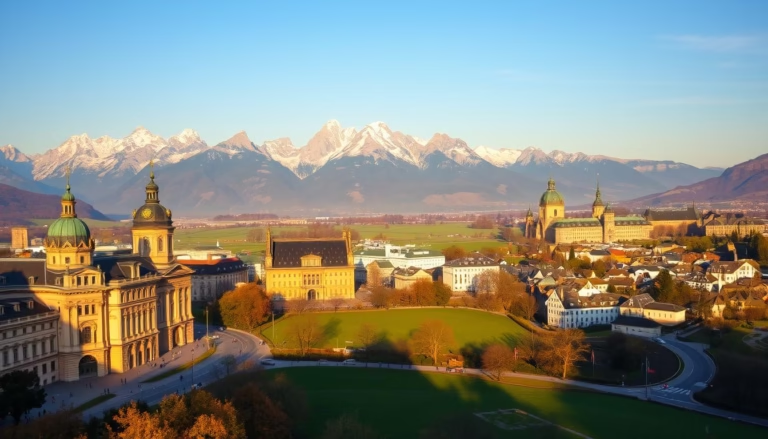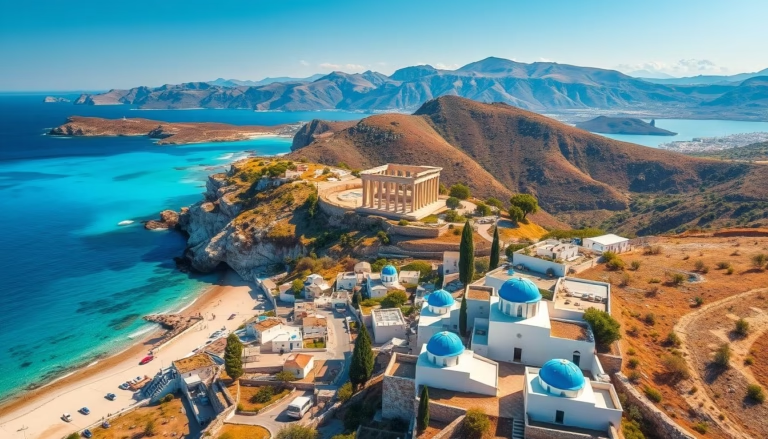Best Cities to Visit in Hungary: A Travel Guide
Did you know Hungary contains more thermal water springs than any other country on Earth? With over 1,300 natural thermal sources bubbling beneath its surface, this Central European gem offers travelers far more than stunning architecture and rich history.
From grand palaces overlooking the Danube River to quaint villages surrounded by vineyards, the country’s destinations blend old-world charm with modern energy. Budapest’s iconic Parliament Building dazzles at night, while Lake Balaton’s shores invite lazy summer afternoons. Lesser-known spots like Eger reveal castle-topped hills and Baroque churches hiding vibrant wine cellars below.
What makes these locations truly special is their diversity. You can soak in historic baths dating to Roman times one day and hike through wildflower-filled national parks the next. Art lovers find museums showcasing Hungarian masters, while foodies savor paprika-spiced stews and sweet Tokaji wines.
Key Takeaways
- Hungary boasts Europe’s largest concentration of thermal springs
- Lake Balaton serves as a popular summer retreat for locals and visitors
- Tokaj’s vineyard-covered hills produce world-famous dessert wines
- Many thermal baths combine wellness with architectural heritage
- Cultural hubs blend contemporary art scenes with medieval landmarks
- National parks protect diverse landscapes from caves to grasslands
Introduction to Hungary’s Rich History and Culture
Hungary’s story unfolds like a living museum, where Roman ruins whisper tales of ancient empires and Baroque palaces showcase royal grandeur. For over 1,000 years, this land has absorbed influences from Mongols, Ottomans, and Habsburgs, creating a cultural mosaic that feels both timeless and fresh.
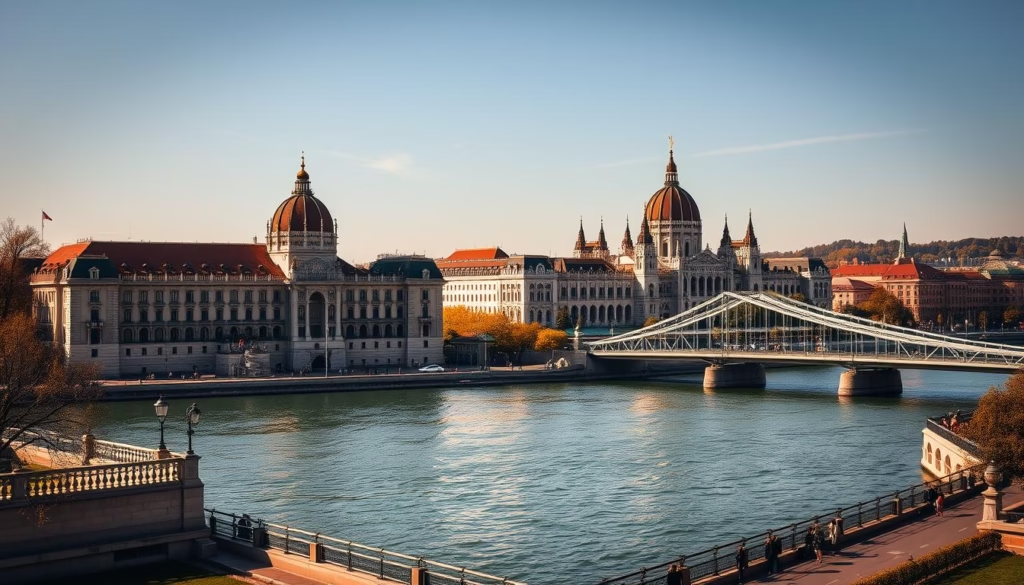
A Melting Pot of Traditions and Modernity
Walk through Hollókő’s cobblestone streets, and you’ll see artisans crafting embroidered folk costumes using techniques passed down for generations. Meanwhile, cities like Pécs buzz with cutting-edge galleries inside Ottoman-era buildings. This blend of old and new extends to café culture, where historic spots like Gerbeaud serve decadent cakes amid crystal chandeliers.
Iconic Architecture and Timeless Attractions
Hungary’s skyline tells its rich history through stone and mortar. Buda Castle’s Gothic arches share the capital with Art Nouveau subway stations. In Eger, a medieval fortress towers above 18th-century wine cellars. Don’t miss these highlights:
- Roman mosaics in Pécs’ Early Christian Necropolis
- Turkish minarets in Szeged’s main square
- Vibrant murals at Szentendre’s open-air museums
From thermal baths to paprika festivals, every corner celebrates Hungary’s ability to honor its past while embracing the present. As locals say: “A múlt nélkül nincs jövő” – without the past, there’s no future.
Exploring Budapest: The Jewel of Hungary
Few capitals blend romance and energy like Budapest. Split by the Danube River, this “Paris of the East” pairs grand architecture with steaming thermal pools. Its two halves – hilly Buda and flat Pest – create a yin-yang of historic charm and urban buzz.
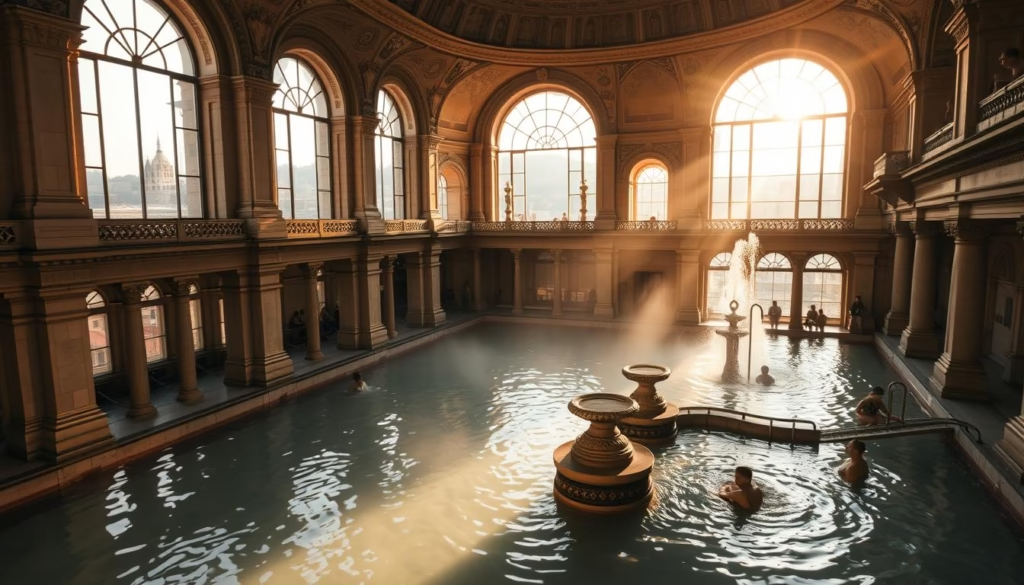
Stunning Landmarks and Thermal Baths
The Hungarian Parliament Building steals the show with its Gothic Revival spires reflecting in the Danube. Across the river, Buda Castle offers panoramic views from its medieval walls. Don’t miss Fisherman’s Bastion, where fairytale towers frame cityscapes.
Budapest’s thermal baths are social hubs. Locals play chess in Széchenyi’s outdoor pools, while Gellért Bath dazzles with Art Nouveau mosaics. For history, Rudas Bath’s 16th-century Turkish dome whispers Ottoman tales.
Cultural Hotspots and Bustling Nightlife
Pest’s avenues burst with life. Andrássy út leads to Heroes’ Square, passing cafes serving chimney cakes. The Opera House rivals Vienna’s with gold-leaf interiors and nightly performances.
When night falls, ruin bars transform abandoned buildings into art-filled playgrounds. Szimpla Kert, the original ruin pub, mixes retro furniture with live music. For quieter evenings, cruise the Danube as bridges light up like golden necklaces.
Discover the best cities to visit in hungary
Hungary’s smaller urban gems offer rich experiences without the crowds. Two standout places to visit combine deep history with lively modern energy.
Eger: Castles, Thermal Baths, and Wine
This small town packs medieval drama and relaxation into one package. Eger Castle dominates the skyline, where visitors walk battlements that withstood Ottoman sieges. Local guides love sharing tales of the 1552 defense – complete with legends about the “Bull’s Blood” wine that fueled resistance.
Today, thermal baths bubble where Turkish forces once camped. The modern Eger Thermal Bath complex mixes water slides with mineral-rich pools. Don’t miss the Valley of Beautiful Women, where candlelit cellars serve Egri Bikavér (Bull’s Blood) – a bold red blend pairing perfectly with hearty Hungarian stews.
Pécs: Art, History, and Vibrant Culture
Southern Hungary’s cultural star shines bright. Pécs earned its European Capital of Culture title through sites like the UNESCO-listed Early Christian Necropolis. Marvel at 4th-century tombs adorned with biblical frescoes.
The Zsolnay Cultural Quarter revitalizes a porcelain factory into a creative hub. Rainbow-tiled roofs crown galleries showcasing Hungary’s iconic ceramics. Evening brings live music to Roman-era streets, blending ancient history with modern beats.
| Feature | Eger | Pécs |
|---|---|---|
| Main Attraction | Medieval Castle | UNESCO Necropolis |
| Historical Era | Ottoman Wars | Roman & Early Christian |
| Specialty | Bull’s Blood Wine | Zsolnay Porcelain |
| Cultural Highlight | Thermal Baths | Art Quarter |
Both places prove Hungary’s magic extends far beyond its capital. Whether sipping wine in a hillside cellar or tracing ancient mosaics, you’ll taste centuries of tradition.
Serenity by the Water: Lake Balaton and Its Surroundings
Central Europe’s largest freshwater body shimmers like a liquid jewel, drawing travelers to its milky-green waters. Known locally as the “Hungarian Sea,” Lake Balaton stretches 48 miles long, creating a playground for sun-seekers and adventurers alike.
Charming Resort Towns and Scenic Promenades
Siófok buzzes with energy, its boardwalk lined with ice cream stands and boutiques. Families flock to sandy beaches, while sailboats dot the horizon. North of the lake, Balatonfüred charms visitors with historic villas and tree-lined spas.
Outdoor Adventures and National Park Explorations
Cyclists conquer the 125-mile trail circling the water, passing vineyards and sunflower fields. Kayakers glide past reed beds teeming with herons. Don’t miss Tihany Peninsula, where lavender perfumes the air below a 900-year-old abbey.
| Town | Vibe | Key Attraction | Specialty |
|---|---|---|---|
| Siófok | Lively | Golden beaches | Water sports |
| Balatonfüred | Elegant | Tagore Promenade | Mineral spas |
| Tihany | Picturesque | Lavender fields | Abbey views |
The Balaton Uplands National Park reveals volcanic hills and hidden caves. After hiking, sample crisp Olaszrizling wines at family-run vineyards sloping toward the water. As twilight paints the lake gold, you’ll understand why this destination captivates hearts year after year.
Off-the-Beaten-Path Destinations
Hungary’s hidden treasures shine brightest when you wander beyond the usual hotspots. Two small towns offer distinct flavors of the country’s soul – one steeped in golden nectar, the other bursting with creative energy.
Tokaj: A Wine Lover’s Dream
In northeastern Hungary’s rolling hills, the Tokaj-Hegyalja region crafts liquid gold. Volcanic clay soils give Tokaji Aszú wines their honeyed complexity, a sweet secret guarded since the 1600s. Wine lovers explore candlelit cellars where cobwebs cling to barrels aging nectar once favored by kings.
Stroll the small town’s streets past Baroque churches to family-run vineyards. Sip amber-hued vintages paired with local cheeses, learning why this region earned UNESCO protection. Each glass whispers centuries of craftsmanship.
Szentendre: Artistic Vibes by the Danube
Where the Danube River bends north of Budapest, pastel houses cluster like spilled paint cans. Szentendre’s Mediterranean charm has lured artists for decades. Today, galleries fill 18th-century merchant homes, showcasing everything from folk pottery to avant-garde installations.
Climb cobblestone lanes to hilltop churches, then refuel with cherry strudel at cozy cafés. The open-air Skansen Museum preserves traditional village life, while summer festivals turn squares into stages. For creative souls, this region sparks inspiration at every turn.
